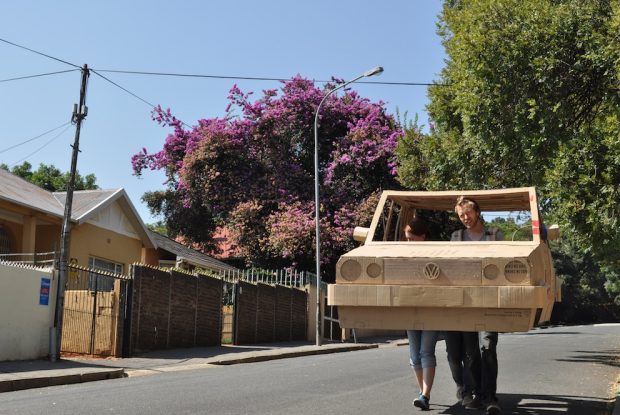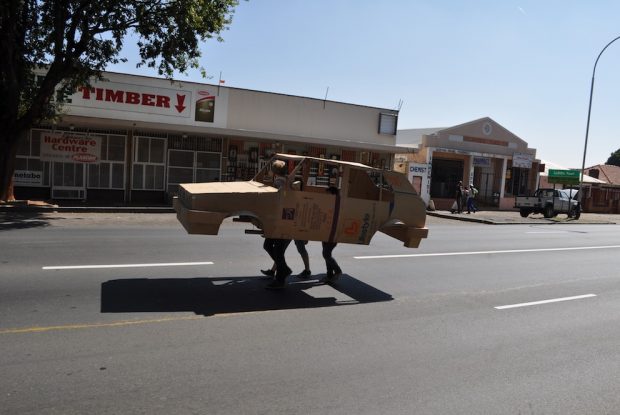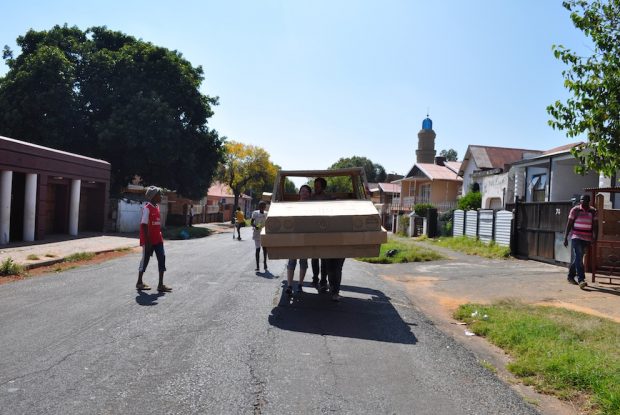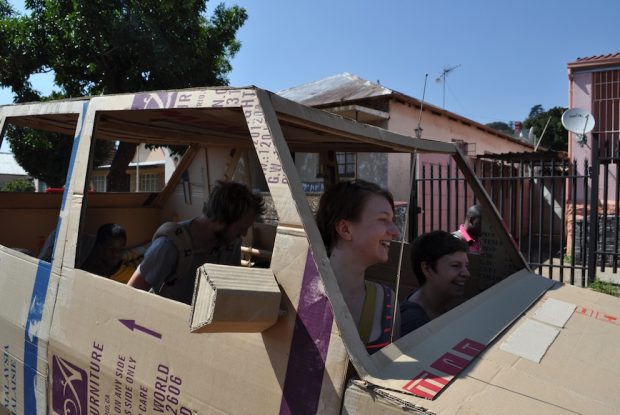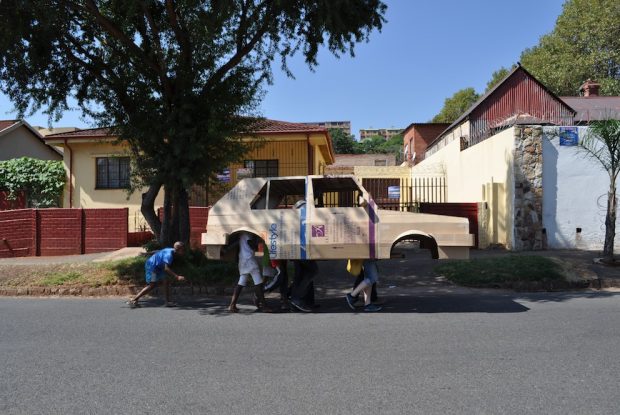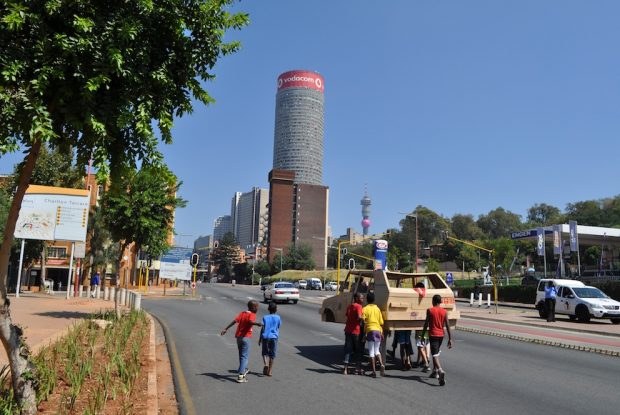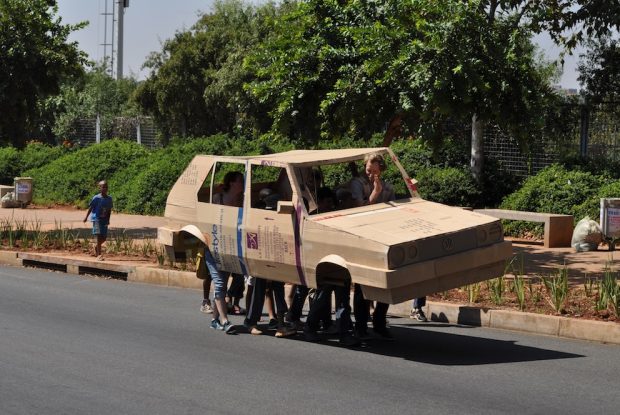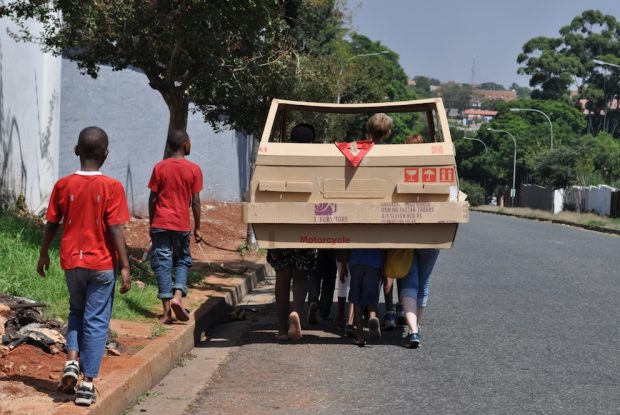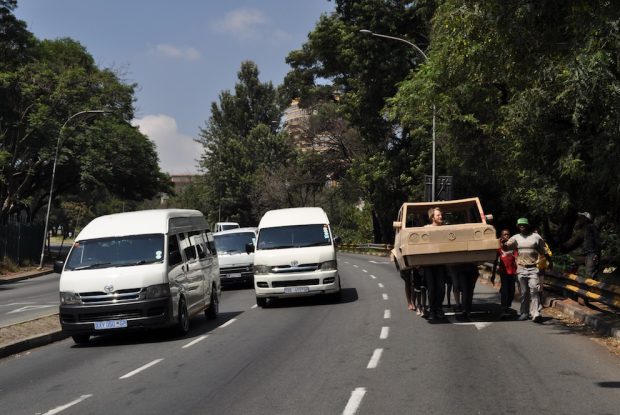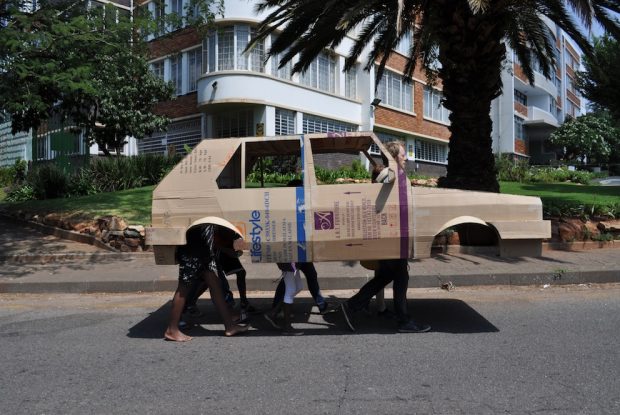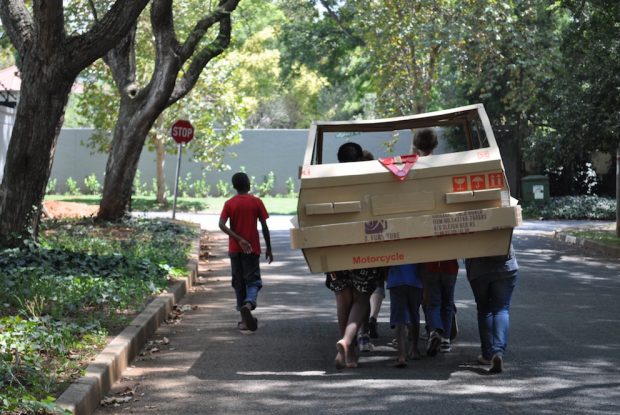Images: Tom Wickmann/Goethe-Institut
In February and March 2013 we were invited by the Goethe-Institut of South Africa to conduct a six-week research residency exploring the notion of security in Johannesburg. We decided to concentrate on Johannesburg’s affluent northern suburbs. What infrastructures, architectures and patterns of usage have emerged or disappeared, as a consequence of increased anxiety or changing attitudes towards physical safety and criminal activity? This led to an interest in the decorative quality of many security measures, the shifting boundaries, appropriation and transformation of public space and an emphasis on the car as a primary means of transport. We were particular interested in the way public pedestrian sidewalks are gradually being replaced by landscaped garden extensions and driveway walls.
Intervention: ‘White wo/man walking’
‘White man/woman walking’ was a 13km walk in a cardboard car, from our place of residence in Kensington to the Goethe-Institut on the other side of Johannesburg.
The walking car playfully subverted the idea of the car as a protective casing in areas not considered safe for walking; A form of camouflage for white walkers. In the suburbs it would become a commentary on the lack of walking infrastructure, aiming to stimulate debate regarding cultures of walking and non-walking.
At the start of our journey we walked through the downtown area of Bertrams. A crowd of curious children soon started to jump inside the car and walk with us, pedestrians would smile and wave and drivers would honk their horns. The car became a tool for social interaction, rather than a way of avoiding it.
Six young people decided to walk with us for the entire two and a half hour journey, changing the way the project would be interpreted by those we encountered and allowing us to share our observations and thoughts as we walked. As most of our companions had never been to the more affluent northern suburbs, the journey became an unusual form of sightseeing that bridged very different communities.
The car was made of recycled cardboard that had been discarded by local furniture and motorcycle stores, a material that you often see being pulled piled high on a trolley along the side of the main road, by those making their living collecting and delivering recyclable goods. We modeled the walking-car on an early VW Golf, one of the most commonly seen vehicles in Johannesburg.
The walking car is constructed similar to a litter, a form of transport without wheels historically used by servants and slaves to carry their masters, with two long poles on either side of the structure supporting the weight of the car.
Walkers: Susanne, Kaspar, Leonie, Siyenda, Bryan, Fabio, Minenhle, Thapelo, Ryan, Promise, Thato, Taris, Philile, Tsepho and many others.
